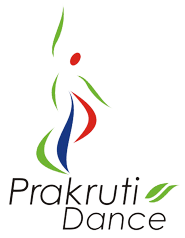Dance is a celebration of everything in nature...
The Vedas and Puranas explain the meaning of Prakruti, out of which one is as follows:
‘Pra’ means principal and ‘Krti’ means creation. Therefore the word is meant to convey the meaning - ‘one that is the principal factor for creation.’
Prakruti is where the five elements of space, wind, water, earth and fire come together to create the whole of the universe. It is the nature all around us.
When one sees nature it is always in motion as if celebrating life by dancing. The movement of the petals, when it unfurls from a bud to a flower, the dancing of the sunlight as it filters through the leaves, the graceful walk of the majestic elephant, the lightning like run of a deer, the energy of the lion – all seem to convey a poetry in motion, which is the dance of nature. Sometimes it seems that time itself dances. This can be especially seen through the change of seasons. Have you seen anything as graceful as an autumn leaf swaying slowly to the ground from the tree or a snowflake gently falling from the sky?
Man too, is a part of nature, and he celebrates it too. During the Vedic era, man attributed all natural phenomena to Gods. Hence there was a Sun God Surya, a Wind God Pavana, the Goddess of Dawn Usha, the Lord of Fire Agni, etc. To assure the good will of these gods, man performed rites and rituals to appease the gods. Hence each god was given sacrifices like ghee, rice and flowers. As each ritual was witnessed by onlookers, the movement, each gesture had to be codified so that everytime a particular god was evoked, the same gestures were used. This is the beginning of what we know as Indian Classical Dance today, where there is an entire vocabulary using hand gestures. The spiritual quality was later added to dance, after its visit to the temple, where the devadasis used to offer puja as a part of temple ritual, in the Shaivite temples. Poets like Tyagaraja, Shyama Shastri, Muttuswami Dixitar introduced the special spiritual quality, which superseded the mundane, normal everyday life and took dance and music to the unworldly level. And so, dance developed through nature, along these religious and spiritual lines to form the classical dances.

